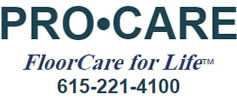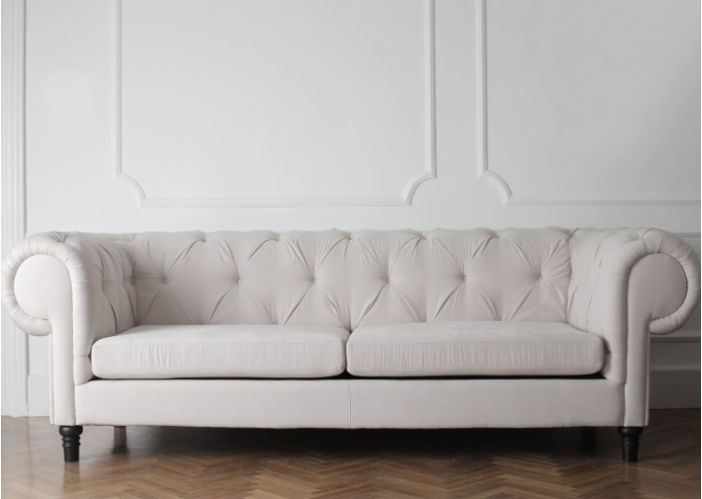
Have You Recently Bought New Upholstery?
It is common for us buyers to make a furniture purchase without necessarily thinking about the fabric type of the upholstery. Of course, all that changes the first time a big spill, smudge or spot shows up on that new arrival. Upholstery cleaning can be a challenge in that the fabric used on your sofa, sectional, chair or stool has specific cleaning requirements. Choose the wrong cleaning product or opt for a water-based approach when only a dry-cleaning solvent is recommended and you may leave lasting damage on your furnishings. That said, there’s no reason to panic when life happens to your favorite furnishings. Start with the cleaning codes and follow these simple ABC’s to address your upholstery cleaning needs.
“A” Always Check Upholstery Cleaning Codes First
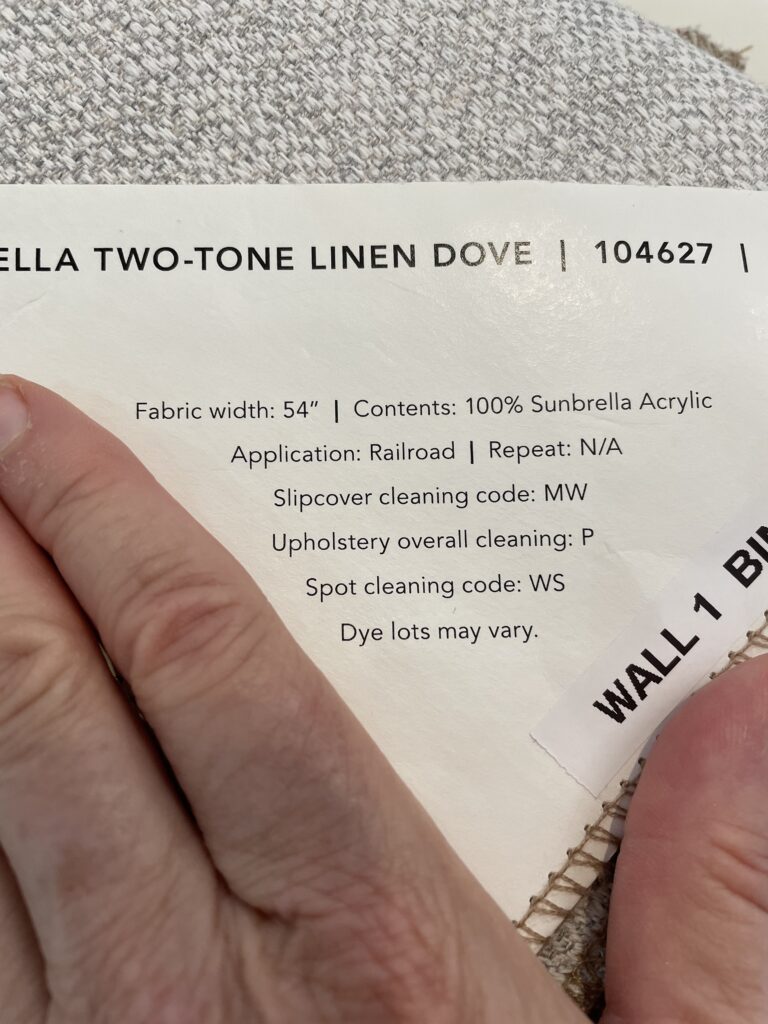
For every fabric or fabric blend there is a right and wrong way to clean. Most experts will direct you to the label on the furniture that spells out the cleaning codes. Just like most clothing these days, upholstery usually has a tag or sticker somewhere inside the cushions, under the cushions or on the bottom of the sofa that provides care instructions. The problems is, those instructions can be hard to decipher.
To the left, you’ll see an example of a fabric care label. This manufacturer uses multiple codes to clarify the particulars of cleaning furniture upholstered in this fabric. At the top, the company identifies the fiber “Content” which goes a long way towards explaining the suggested cleaning methods.
Now look to the bottom of the label. The “Spot cleaning code” will be the most familiar. “WS” means you can use Water or Solvent based cleaning solutions on any spot or spill that happens to your furnishing. WS is one of 4 common upholstery cleaning codes for upholstery fabric. The 4 include:
“W” means safe for all water-based cleaning solutions.
“S” means use solvent/dry cleaning products only.
“W/S” means you can use water or solvent-based cleaners.
“X” means do not use any type of cleaner. Vacuum or brush only.
As for the rest, you may not have seen this level of detail on a label. In the case of this company, you’ll find an explanation of all the codes on their website. The “Slipcover cleaning code: MW” means the sofa’s slipcovers are machine-washable. Lastly, you’ll find a “P” next to the “Upholstery overall cleaning.”
If you do not find the information on the underside of a cushion or on the bottom of the chair or sofa, another great resource is the sales record or website for the company where you purchased your sofa. If it is a recent buy, your salesperson may have a record of the fabric type and care instructions. When you are looking at that label or record, here’s a primer for what the cleaning codes mean.
“B” Before you do it yourself, speak to an upholstery cleaning professional
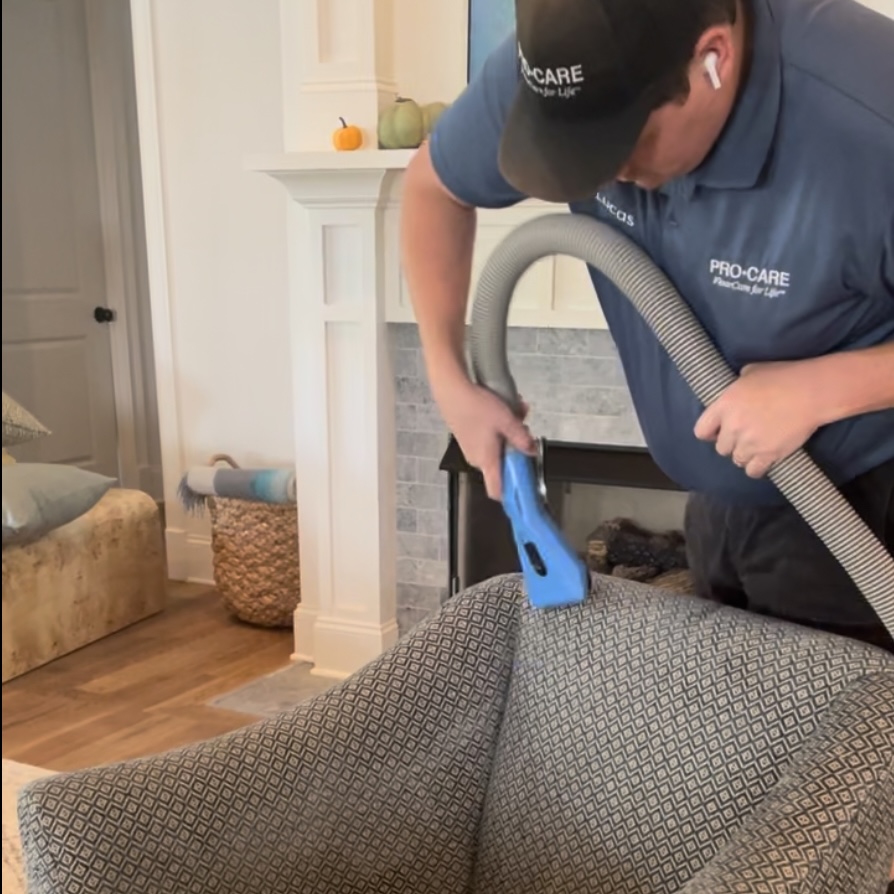
When considering your cleaning options, remember to get input and pricing from a local professional. Local cleaners are quick to respond and equipped with useful information. They are also committed to serving their neighbors. If you have a splatter, spill or spot on your upholstery, call a pro and tell them what you know – the fabric type, the suggested cleaning codes and what the spotting substance is. Your upholstery cleaning contact may even have a way for you to send pictures of the problem area on your furniture.
If you can’t find a cleaning tag and your retailer cannot provide that information, you can often learn the fiber type of your upholstery from a professional cleaner. When you call to make your appointment, tell the company rep that you have lost the cleaning information for your furnishing. The best cleaners will equip their technicians with fiber testing or “burn-test” kits. Techs use these kits to test a small sample of the upholstery fabric (often only a thread taken from the inside selvage of a cushion).
Let the pros talk you through your options – both the immediate actions you can take and what results they may be able to get from a cleaning appointment. Sometimes, clients can get good results on their own but often the best solution will require a multi-step process with specialized cleaning protocols and products. That sort of cleaning needs to be entrusted to a reputable upholstery cleaning company. If you are concerned about finding the best professionals for the job, there are easy steps you can take to feel confident in your choice of a local cleaning company.
“C” Clean conservatively
If you decide to go it alone, do your research and be gentle. Sometimes it is the client’s cleaning efforts, not the original spill, that turns a spot into a stain. And stains may not respond to further cleaning attempts, whether yours or a professional cleaner’s. There are a few universal rules for any spill.
First, use a spoon to remove any solids from the spill area and scoop towards the center of the spot to avoid making the problem area bigger. In other words, if the spill is spagetti with meat sauce, you can remove the noodles and the heavy components of the sauce with a delicate touch.
Second, beware the “best” or “simple” cleaning prompts online. Dish detergent and water may work OR may make things worse. Finally, no matter how upset you are about the spill, do not rub or scrub! When a spill gets ground into the fibers of a fabric, it leaves lasting damage. And if you live on your upholstery, consider a professionally applied fabric protection. You can find an effective protection product and not compromise the health of your home.
Ask important questions when you call that protection professional. Is the protectant safe for kids and pets? How long does a protective treatment last (most need to be re-applied after deep upholstery cleanings)? And does your upholstery even need a protectant? Some fabrics have protection built-in to the fiber, like Sunbrella or Revolution. A reputable cleaning company will be honest with you about the needs of your upholstery
The secret to having a clean sofa is choosing the best fabric for your lifestyle
Keeping your upholstered furniture clean starts with buying wisely. Few rooms in our homes work harder than the family room and no piece of furniture works harder than the family sofa. When it is time to replace that favorite furnishing, one of the most important considerations is what fabric is the best fit for your home and lifestyle. Why? Because your sofa may be a place for lounging or office work, sleeping or eating, cuddling or computing. It may be enjoyed by babies, pets, professionals, guests or all of the above. So the best upholstery fabric is the one that is not only attractive and pleasant to the touch but allows for cleaning and maintenance that will insure long-lived enjoyment.
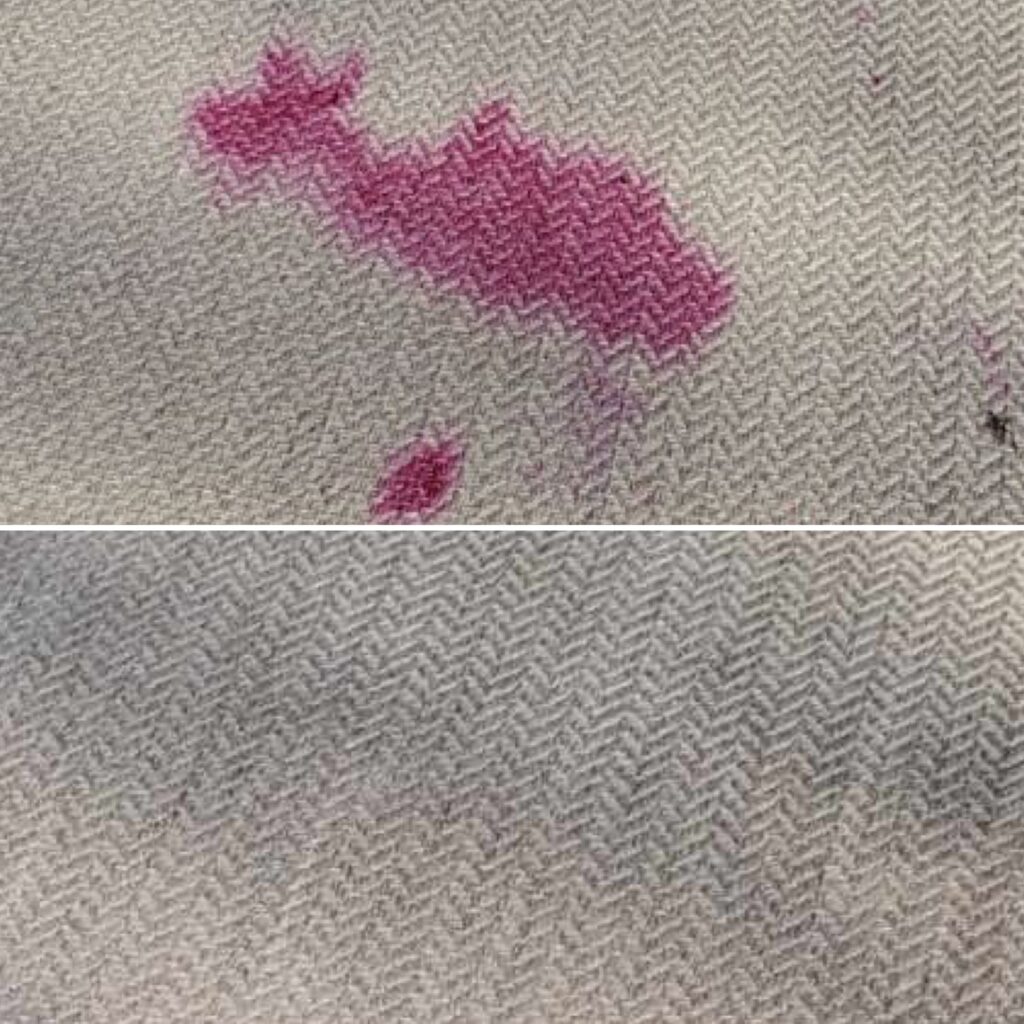
We never know when life will “happen” to our furnishings. This ivory sofa (left) was delivered one day and the very next day, the client’s toddler had a tummy upset after eating some blueberries. Blueberries and stomach acid is a challenging combination, even for a pro.
Choose your upholstery fabric carefully, protect if advisable and make friends with your local upholstery cleaning company. And remember, living rooms are meant to be, well, lived in. Enjoy your furniture and consider a deep cleaning every 12-18 months, even if the fabric looks clean. You never know what contaminants may be lurking in the fibers. Cleaner is healthier.
Upholstery cleaning is a complex and challenging task. Remember to look for the cleaning codes before you launch in and keep in mind that reputable professionals are just a phone call or computer-click away!
